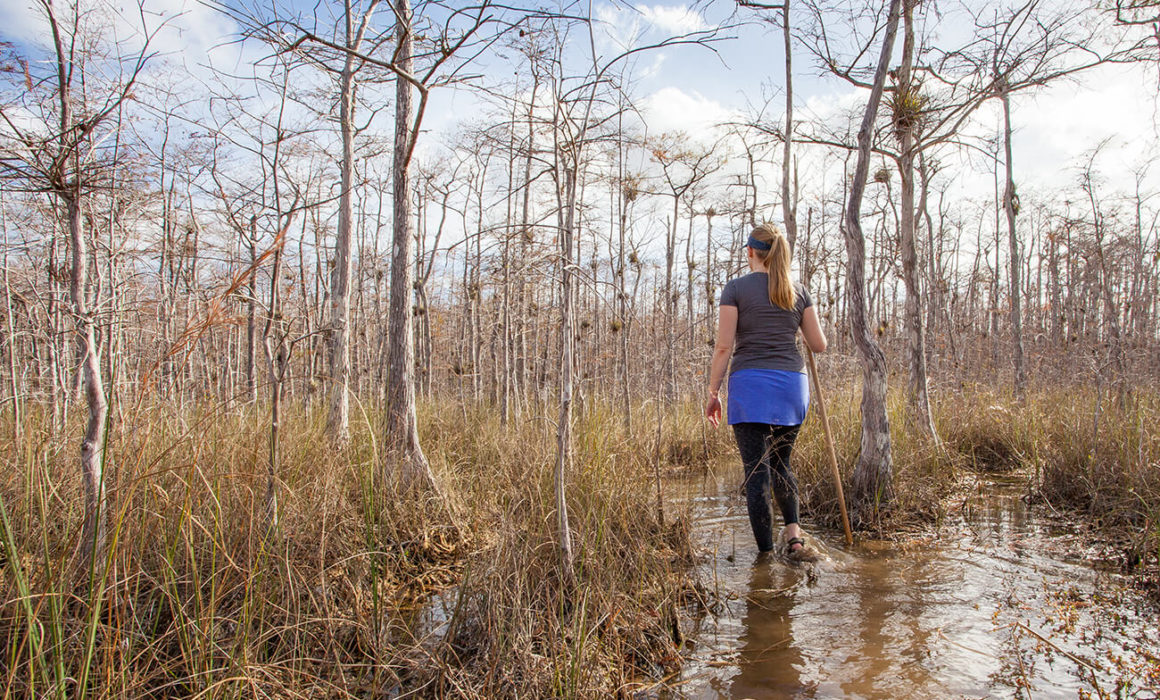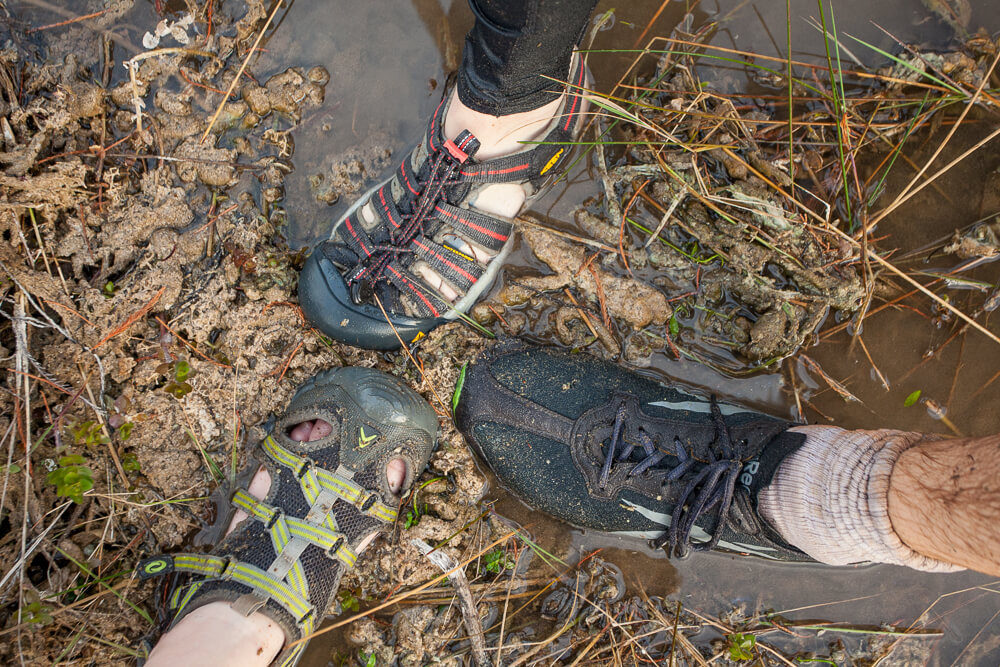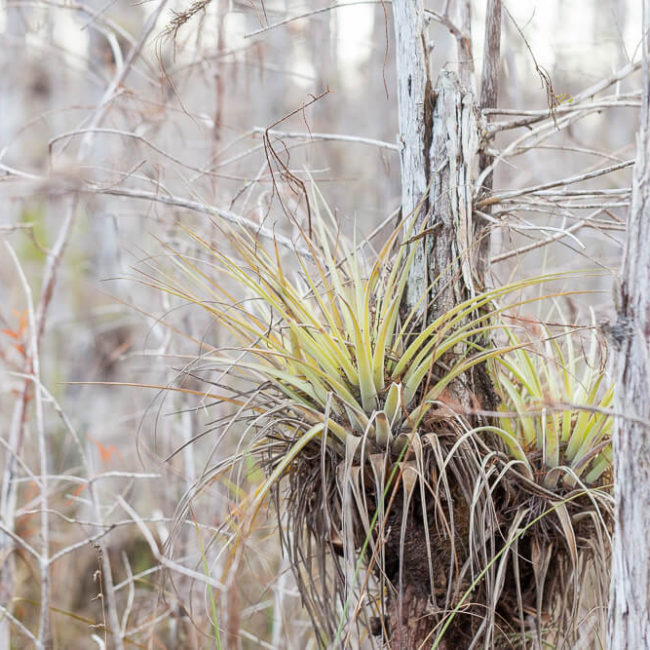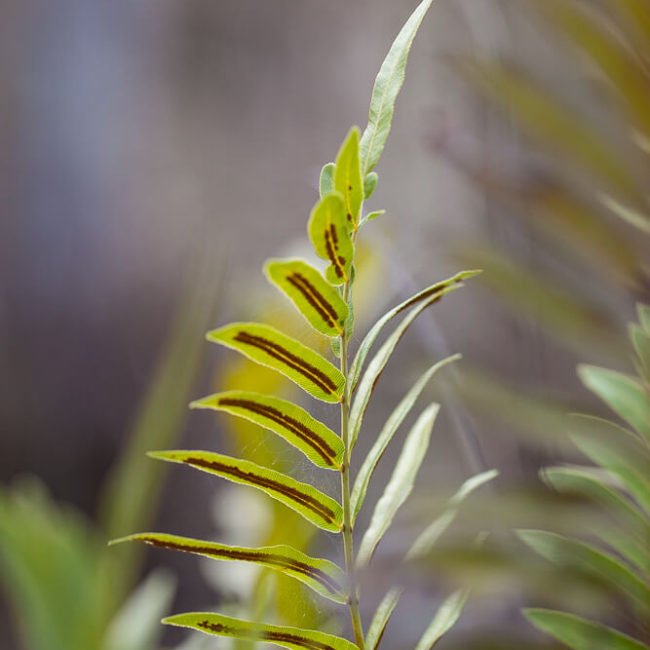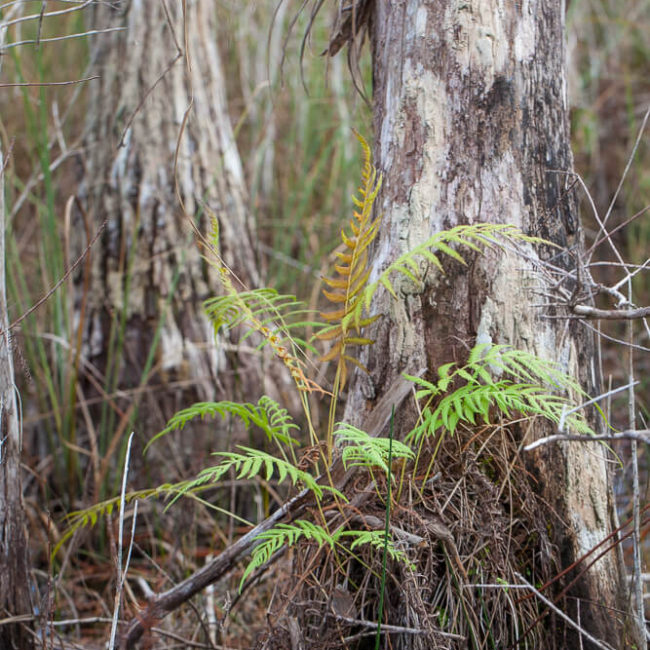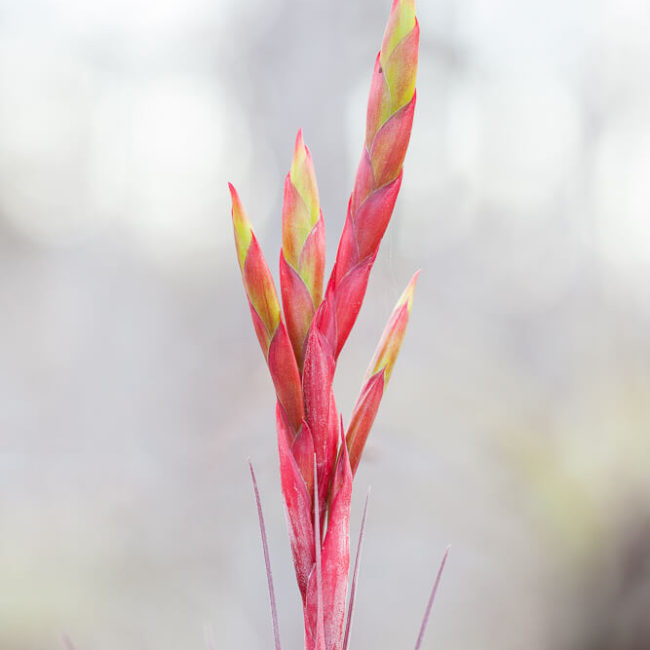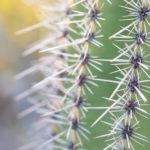Get Muddy Exploring Big Cypress National Preserve
The first steps are the most difficult. Before you looms a mixture of marl mud and periphyton algae that resembles vomit. Like soggy cheese puffs, the algae floats on the water’s surface.
Don’t hesitate, just walk in. There’s no other way. You will get muddy and wet. But it is completely worth it to be able to see the interior of Big Cypress National Preserve. Once inside, you’ll quickly forget the mud. A beautiful otherworldly forest rises up from the water before you.
Exploring Big Cypress National Preserve
Big Cypress National Preserve is unlike any other place in the United States. Created in 1974, the preserve protects 729,000 acres of freshwater swamp ecosystem. It’s located in central South Florida, just north of its more famous neighbor, Everglades National Park. Both park and preserve protect the everglade ecosystem. Slight variations in elevation and geology result in five unique habitats within the preserve: cypress swamps, hardwood hammocks, pinelands, prairies, and estuaries. As a swamp lover, I was fascinated by the subtropical cypress swamp and knew that I had to see it up close.
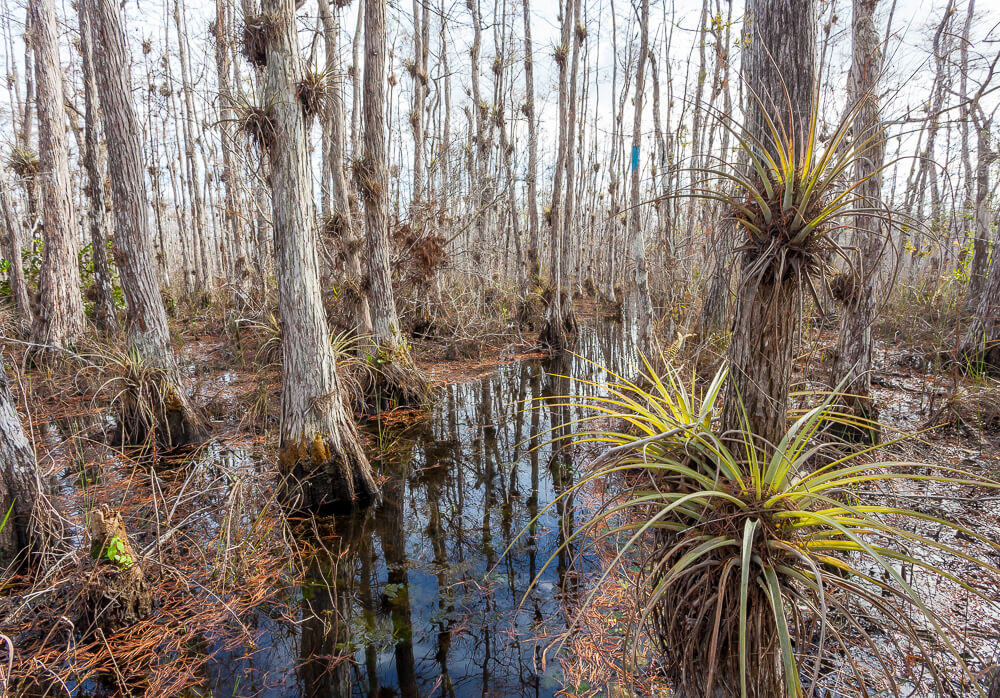
Epiphytes, commonly called air plants, thrive in Big Cypress National Preserve.
In a waterlogged environment, there aren’t many traditional trails or even roads for that matter. The Tamiami Trail (US 41) bisects the preserve, connecting Miami to Tampa. From the road, you can access several short boardwalks that provide a glimpse of the everglade ecosystems. But I wanted a more intimate experience. The Roberts Lake Trail was the perfect way to immerse myself in the cypress swamp.
Hike Roberts Lake Trail
The Roberts Lake Trail runs north to south from Tamiami Trail to Loop Road. You can begin your adventure at either trailhead. The north trailhead is located across the street from the Oasis Visitor Center. It’s marked by a brown pole, but pay close attention as it’s easy to miss. The southern trailhead can be found on Loop Road near the Tree Snail Hammock Nature Trail. Look for the Florida Trail roadside kiosk. (At one time, Roberts Lake Trail was officially part of the Florida Trail). As the 8.2-mile trail meanders through the swamp, it can be easy to lose. Pay attention to the blue blazes.
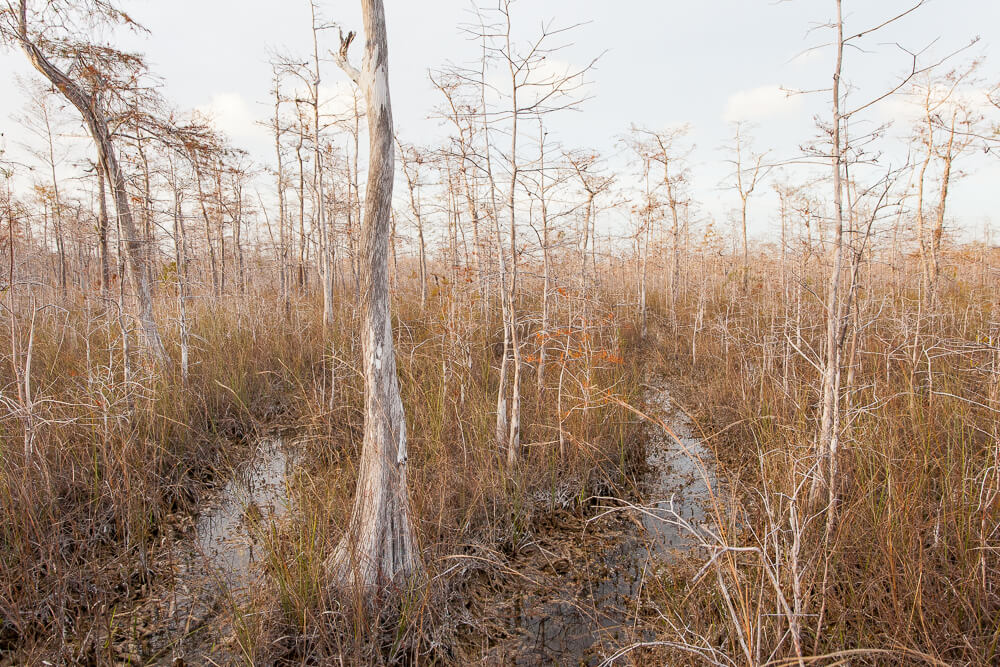
From the visitor center, you enter a wet savannah that is dominated by grasses and dwarf pond cypresses.
I entered the swamp from the northern trailhead. Once you slip through the brush alongside the road, you enter a new world. The trail first cuts through a wet savanna that is sprinkled with short cypress trees. Here, the cypress trees’ ghostly white bark shines brightly under the Florida sun.
As you get closer to Roberts Strand, the water deepens and darkens. With ample water, the cypress trees grow taller and shade the forest floor. An eerie forest, the cypress trees’ pale bark starkly contrasts the black tannin waters they emerge from. In winter, the forest is devoid of many colors as bald cypress trees drop their needles. However, their branches aren’t bare, as air plants seem to cling to every surface.
Cypress Trees for Different Water Depths
Two types of cypress trees grow within Big Cypress National Preserve: pond cypress (Taxodium ascendens) and bald cypress (T. distichum). The water level is a contributing factor that determines the type of cypress tree that grows and its size.
Much of Big Cypress National Preserve is a wet grassland savanna dominated by gaminoids, which are grass-like plants. Pond cypress trees are well adapted to the low nutrient levels and fluctuating water levels found in these savannas. An open canopy allows ample light to reach the prairie plants that make up the understory. Pond cypress grows among other plants like beak rush (Rhynchospora microcarpa), sedges (Cyperus spp.), muhly grass (Muhlenbergia filipes).
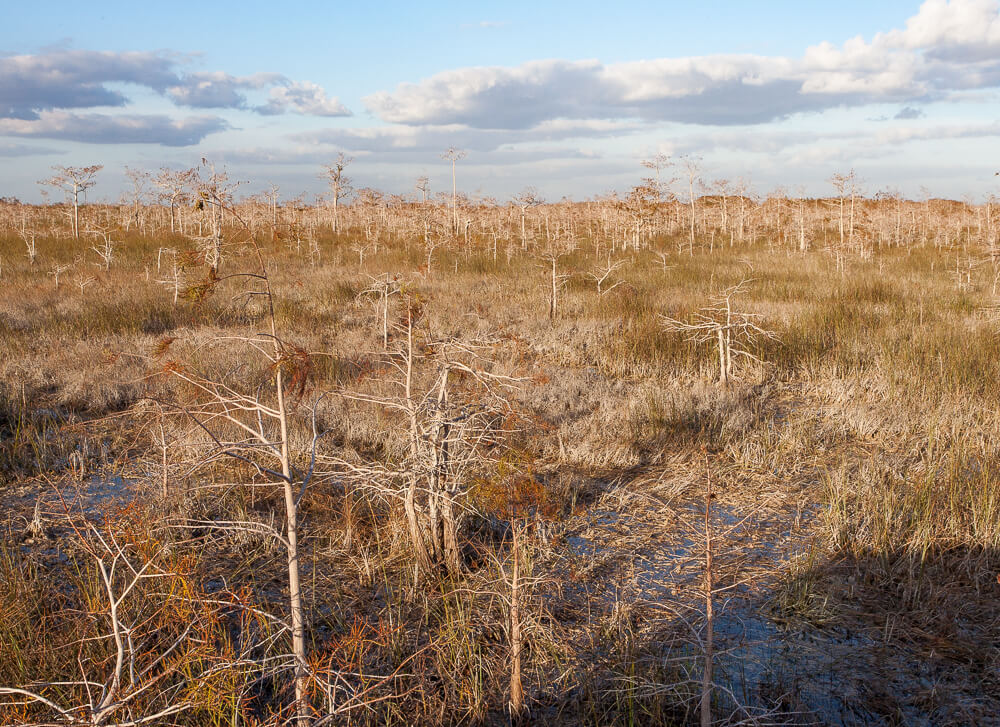
According to the National Park Service, approximately 23% of Big Cypress National Preserve is a freshwater marl prairie ecosystem, where you’ll find sawgrass, muhly grass, and dwarf cypress.
Water level deepens within sloughs, which are slow-moving rivers that transport water through the Everglades ecosystem. These areas stay flooded almost year-round, while the savannas tend to dry up during the winter dry season. It’s in these deeper areas of water that T. distichum thrives and forms cypress strands. Driving through the preserve, you’ll note the appearance of hills in the distance. These aren’t actual hills, but cypress domes. Here, the presence of taller cypress trees mark areas of deeper water.
The Roberts Lake Trail crosses through several strands. While the water is deeper, I think it makes for easier hiking. There’s no marl mud and thus clearer water, so you’re able to see the swamp floor more easily. Be careful though, I almost stepped on a Florida softshell turtle that was lounging on the path. Luckily, we saw no alligators on the trail. (The rangers told me that they’re not very common on the trail).

Hiking through Big Cypress National Preserve offers true solitude. Few people venture into the forest.
Sloshing through the water beneath the tall cypress is a magical experience. To top it off, a hanging garden surrounds you on your hike.
A Hanging Garden of Epiphytes
Next to the cypress trees, epiphytes are the defining characteristic of Big Cypress National Preserve. Epiphytes come from many different plant families, but the most well-known are the bromeliads. Commonly called air plants, they thrive in South Florida’s humid environment. While epiphytes grow on other plants, they’re not parasitic. They obtain moisture and nutrients from the air, rain, and decaying detritus that falls on them. Anchored by tiny roots, they can be found growing on cypress branches and trunks. Common epiphytes in Big Cypress National Preserve are swamp fern (Blechnum serrulatum), butterfly orchid (Encyclia tampensis), cardinal air plant (Tillandsia fasciculata), and the reflexed wild pine air plant (T. balbisiana).
You’ll also find plants that aren’t epiphytes in the cypress dome, like pond apple (Annona glabra), alligator flag (Thalia geniculata), and coastal plain willow (Salix caroliniana).
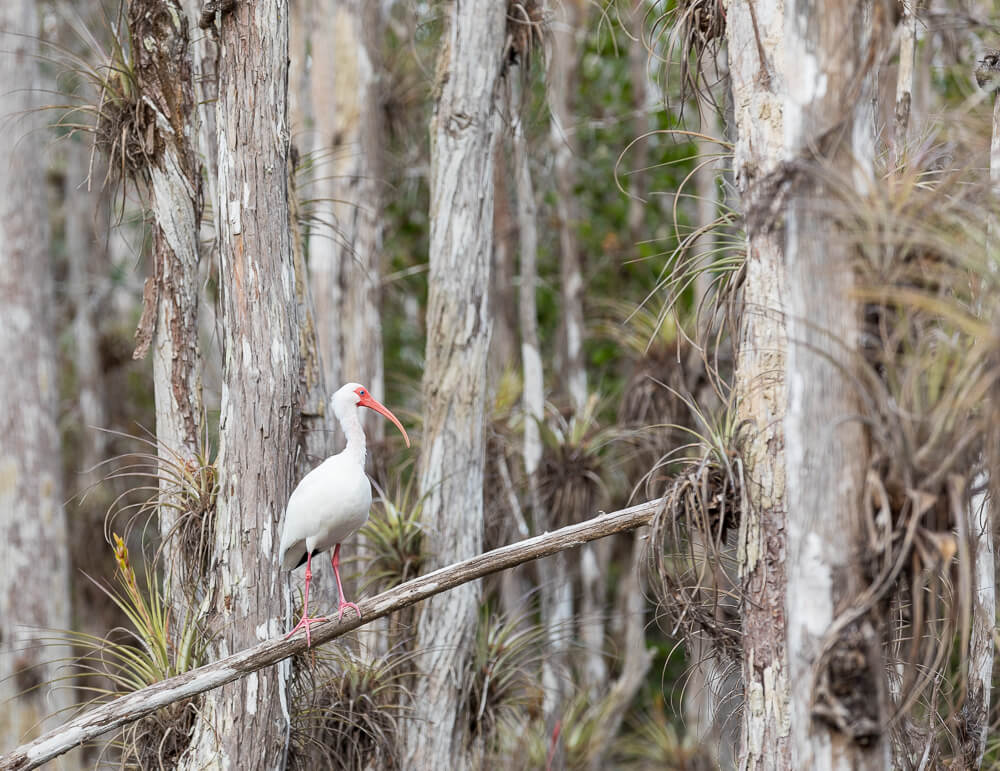
White ibis are common throughout Big Cypress National Preserve. Their red beak and legs add pops of color to the winter landscape.
While cypress and epiphytes grow elsewhere in the South, they come together in a unique way in the subtropical swamps of South Florida. Hiking through Big Cypress National Preserve is an experience that I won’t soon forget.
Tips for Hiking in Big Cypress National Preserve
Roberts Lake Trail is not your typical afternoon hike, especially if you’re not from Florida. A few considerations will make for a more enjoyable experience.
- Bring a wooden hiking pole. The ground is uneven; should you lose your footing, a sturdy pole helps you brace yourself. A pole is also helpful for feeling the ground ahead of you. If you don’t have hiking poles, you can borrow one from the Oasis Visitor Center for free. Talk to the rangers at the visitor center desk for more information.
- Put your valuables in a waterproof bag. If you slip and fall, they’ll be protected.
- Wear sturdy shoes that won’t get pulled off in the mud.
- Clean up at the Oasis Visitor Center. There is a hose on the exterior of the building that you can use to wash off the mud.
- Tell someone where you’re going and when to expect you back.
- Embrace the mud! You’ll have a blast exploring this unique ecosystem.
For more information on hiking safely in Florida, read this article by the Florida Trail Association.

